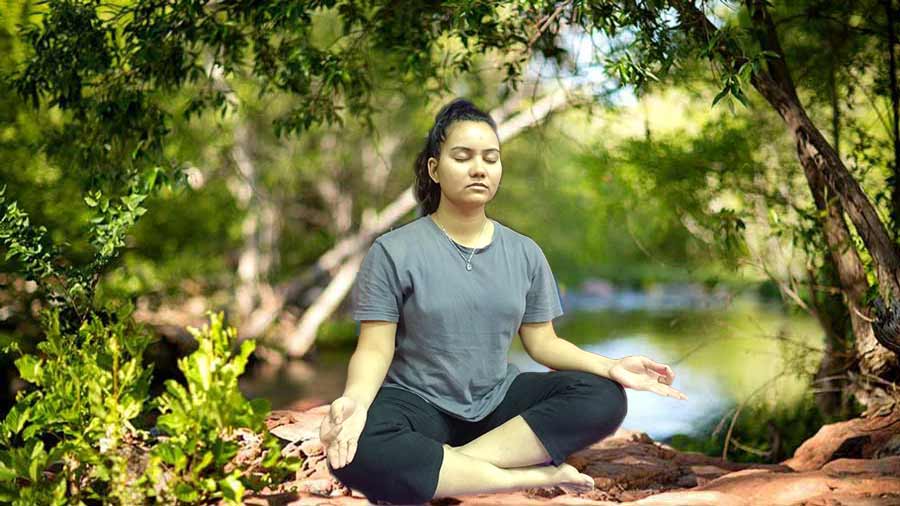
Meditation is one of the most popular treatments for headaches. Meditation is a proven way to relax and reduce tension. It is also beneficial for those who suffer from migraines and frequent headaches. Because it isolates the problem areas, it can help to reduce pain. Practicing this form of meditation can also reduce the severity of a migraine or a daily occurrence of a headache.
Research has shown that meditation can reduce the pain of headaches. Many studies have shown that meditation can relieve pain-related headaches by clearing the mind from negative thoughts and encouraging focus. Several researchers have even found that people who practice meditation reported improvement in migraine-related disability and reduced pain intensity. Mindfulness and Kundalini are the two main types of meditation. Both meditations allow you to disconnect from your thoughts and feel better.

It is beneficial in treating headache pain but can be difficult for those who have never tried meditation. It requires participants to be silent for long periods of the day, stop thinking and just focus on the present. Although this may seem intimidating to those who have never tried meditation, there are many other techniques available to help you manage the pain and suffering associated with migraines. Once you understand what you are doing, you can practice.
A number of studies have shown that meditation has the potential to reduce migraine intensity and its duration. The Wake Forest Baptist Medical Center, North Carolina, assigned 19 migraineurs to a stress reduction program that included mindfulness meditation, yoga and yoga. The meditation sessions were 30 minutes long. Although the benefits were not statistically significant, they did show shorter headaches. This could be a good choice for those suffering from chronic headaches.
In addition to reducing headache pain, meditation has many other benefits. Meditation can reduce stress and relax the body. It reduces migraine frequency and severity. It increases pain tolerance. One study saw 92 people being assigned to a mindfulness meditation program. The study subjects were taught to meditate for one hour each day. These results were observed in only four weeks. Participants in the control group had no benefit.

Another study suggests that meditation for headaches can decrease the frequency and severity of migraine attacks. Meditation for headaches increases heart rate variability which can improve cardiovascular health, sleep quality, and psychological resilience to stress. To reduce migraines, people suffering from chronic headaches may want to meditate. It will help them live a more stress-free life. It is also a great way to boost their mood. Meditation not only reduces the severity of their migraine attacks but also helps improve their overall health.
FAQ
Do I have to count calories?
Perhaps you are wondering what the best diet is for you. or "is counting calories necessary?" The answer is dependent on several factors like your current health status, personal goals, your lifestyle, and your preferences.
The Best Diet For Me - Which One Is Right For You?
My personal health, goals and preferences as well as my lifestyle determine which diet is best for me. There are many diets out there, some good and some bad. Some diets work better than others. What should I do then? How do I make a good decision?
This article aims at answering these questions. It begins by briefly describing the various diets available today. Then, the pros and cons of each type of diet are discussed. We'll then discuss how to choose which one is best for you.
Let's start by taking a look at the various types of diets.
Diet Types
There are three main types: low-fat, high-protein, or ketogenic. Let's take a look at them all below.
Low Fat Diets
A low-fat diet reduces the amount of fats you eat. This is done through reducing the intake of saturated fats (butter, cream cheese, etc.) They are replaced by unsaturated fats such as avocados, olive oil, and cream cheese. Low fat diets are often recommended to those who wish to lose weight quickly. This type of diet can lead to constipation and heartburn as well as indigestion. In addition, it may lead to vitamin deficiencies if a person doesn't get enough vitamins from their food.
High Protein Diets
High protein diets restrict carbohydrates in favor of proteins. These diets often have higher levels of protein than most other diets. These diets are intended to increase muscle mass and reduce calories. They may not be able to provide sufficient nutrition for people who need it. They are not suitable for all people because they can be restrictive.
Ketogenic Diets
Ketogenic diets can also be known as keto diets. They are high on fat but low in carbs and proteins. These are often used by bodybuilders and athletes because they allow them the ability to train harder and for longer periods of time without feeling tired. However, they must be used with caution to avoid nausea, headaches and fatigue.
Is cold a sign of a weak immune response?
Being cold gives you a weaker immune system because when you are cold, your body produces less white blood cells which fight infections. However, being cold also makes you feel better because your body releases endorphins into your brain which reduce pain.
How can I determine what is best for my health?
You must listen to your body. Your body knows what you need when it comes time to eat, exercise, and get enough rest. It's important to pay attention to your body so you don't overdo things. Listen to your body and make sure you're doing everything you can to stay healthy.
Statistics
- In both adults and children, the intake of free sugars should be reduced to less than 10% of total energy intake. (who.int)
- Extra virgin olive oil may benefit heart health, as people who consume it have a lower risk for dying from heart attacks and strokes according to some evidence (57Trusted Source (healthline.com)
- According to the Physical Activity Guidelines for Americans, we should strive for at least 150 minutes of moderate intensity activity each week (54Trusted Source Smoking, harmful use of drugs, and alcohol abuse can all seriously negatively affect your health. (healthline.com)
- The Dietary Guidelines for Americans recommend keeping added sugar intake below 10% of your daily calorie intake, while the World Health Organization recommends slashing added sugars to 5% or less of your daily calories for optimal health (59Trusted (healthline.com)
External Links
How To
27 steps to a healthy lifestyle if your family only eats junk food
Cooking at home is the best way to eat well. But, it can be hard to make healthy meals because many people don't know how. This article will offer some suggestions on making healthier dining choices at restaurants.
-
Look for restaurants that offer healthy choices.
-
Before ordering meat dishes, order salads and other vegetables.
-
Ask for sauces with no added sugar.
-
Avoid fried foods.
-
Instead of ordering fried meats, request grilled meats.
-
Do not order dessert unless you really need it.
-
It is important to have something more after dinner.
-
Take your time and chew slowly.
-
Take plenty of water with your meals.
-
Do not skip breakfast, lunch or dinner.
-
Fruits and vegetables are a great addition to every meal.
-
Drink milk rather than soda.
-
Sugary drinks are best avoided.
-
Limit salt consumption in your diet.
-
Try to limit the time you go to fast food places.
-
Ask someone to join if temptation is too much.
-
Don't let your children watch too much TV.
-
During meals, turn off the TV.
-
Do not consume energy drinks.
-
Regular breaks from work are important.
-
Get up early and go for a run.
-
Do some exercise every day.
-
Start small and increase your knowledge slowly.
-
Set realistic goals.
-
Be patient.
-
Find time to exercise even if you don't feel like it.
-
Positive thinking is important.